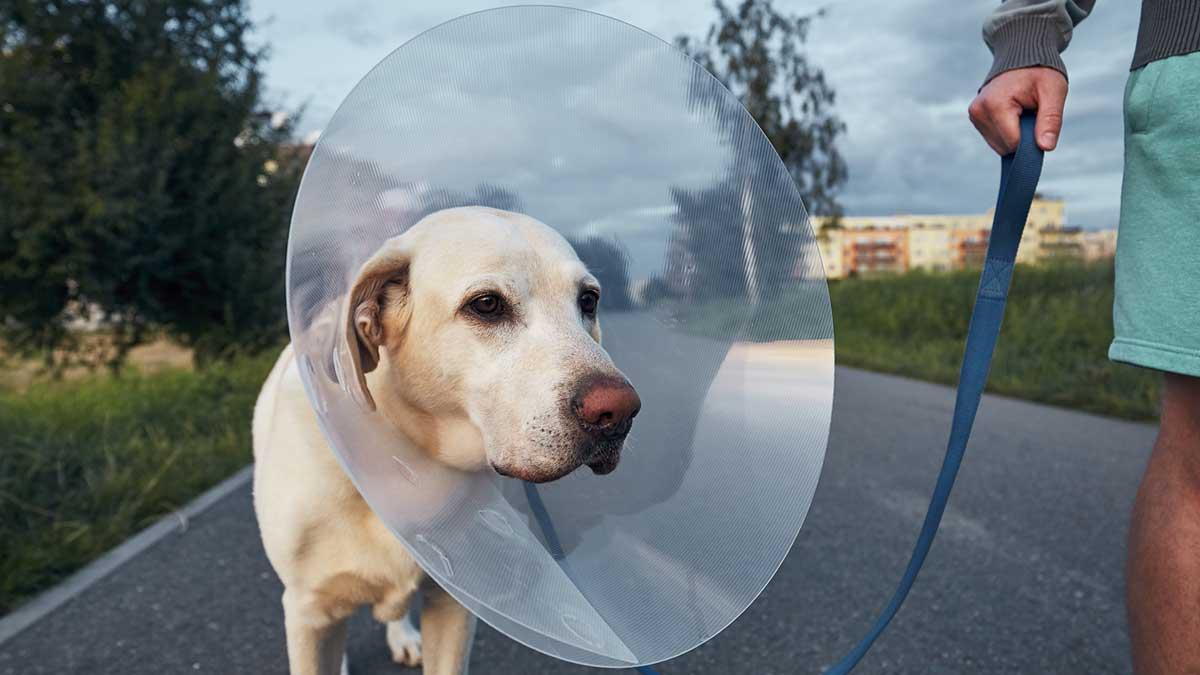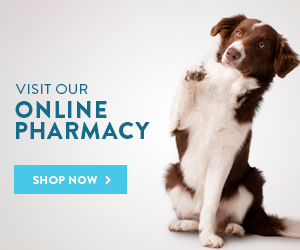
When a beloved pet undergoes orthopedic surgery, it's not just the dog that experiences the initial shock – pet parents do, too. Understanding what to expect, especially in terms of recovery time, is crucial. Orthosurgery, whether it's for a broken leg or a more complex joint issue, marks the beginning of a critical time for both the dog and its owner. The success of a particular surgery heavily depends on the care and attention given during the phase of recovery.
The Recovery Period: A Journey of Healing
The recovery time post-orthopedic surgery is a delicate phase where the dog’s recovery is closely monitored. This phase is not just about healing the surgical site but also about the dog gradually regaining strength and mobility. The process of a successful recovery involves strict adherence to recovery instructions provided by the veterinarian or the referring veterinarian. These instructions are the rules of recovery that guide the initial phase of recovery and influence the overall time of recovery.
Understanding the Timeframe for Recovery
A common question that pet owners have is about the duration it takes for their dog to start walking after surgery. This time of recovery is a part of the healing and varies depending on several factors, including the type of surgery, the dog's age, and overall health. During this given period of time, the dog's activities are limited, and the time of day for exercises and walks is carefully chosen to ensure a smooth and effective recovery.
The Recovery Phase: Guidelines and Care
Immediate Post-Operative Period
In the immediate post-operative period, the focus is on managing pain and preventing any harm to the surgical area. Pain management may involve additional pain medications, and care at this stage includes setting up a comfortable sleeping area, possibly with a rolled-up towel for support. The use of a plastic cone-shaped collar or a traditional cone collar is often necessary to prevent the dog from licking or biting the surgical area.
The Role of the Pet Owner
As a pet owner, playing a vital role in your dog’s recovery is essential. This includes monitoring the surgery site for signs of potential complications, such as blood-tinged discharge, and ensuring that the dog follows a strict rest regime. Home care during the first week is crucial, and it's a good idea to keep the dog in a place with lots of space but minimal chances of excessive movement.
Diet and Exercise
Managing your dog’s diet is important during recovery. Dogs may require fewer calories due to reduced activity, but a balanced diet is still crucial. Gentle exercise, under the guidance of your veterinarian, is an effective way to aid recovery. Forms of gentle exercise can include short, controlled walks on a leash and interactive games that don't involve excessive movement or strain.
Postoperative Care and Instructions
First Things First: Understanding Your Dog’s Needs
In the first few days post-surgery, it's important to understand your dog’s needs. Active dogs might find it challenging to stay still, and additional help might be needed to keep them calm. This could include the use of travel crates, anti-anxiety medication, or engaging in low-impact pursuits like puzzle games.
Follow-Up and Monitoring
Regular check-ups with the orthopedic surgeon or veterinarian are crucial. They provide an accurate diagnosis of your pet's progress and can adjust the instructions for recovery as needed. This is also the time to discuss rehabilitation or the use of herbal remedies and supplements for muscle relaxation and overall health.
In the days following orthopaedic surgery, the use of an Elizabethan collar is often recommended as an important part of the recovery process. This collar, commonly known as the "cone of shame," plays a crucial role in preventing your dog from licking or biting at the surgery site, which can lead to infection or disruption of the healing process. Especially in the initial recovery phase, when the dog is still overcoming the initial shock of a veterinary surgery, the collar ensures that the site remains undisturbed, allowing for proper healing. It's a simple yet effective tool in the arsenal of post-surgery care, often recommended by the referring veterinarian.
Pain management is another critical aspect that needs close attention in the first couple of days post-surgery. Your veterinarian may prescribe pain relief medications and suggest practical measures like applying a front leg bandage, if that's the operated area, to provide additional support and comfort. This bandage not only helps in reducing swelling but also adds a layer of protection to the sensitive area. The combination of medication and physical support aids in mitigating discomfort, allowing your dog to rest more comfortably. This careful management of pain is essential in helping your pet navigate through the initial days of recovery smoothly and with as little stress as possible.
Incorporating X-rays in Monitoring Progress
These imaging tests allow the orthopedic surgeon to monitor the healing progress of the bones and joints closely. X-rays are particularly crucial in the early stages of recovery, as they provide a clear picture of how well the surgical site is healing. For a small dog whose bones and joints may heal differently than those of larger breeds, these X-rays are invaluable. They help in making informed decisions about the pace and nature of ongoing care and rehabilitation.
Another important aspect of post-surgery care is protecting the surgical site from external factors. A simple yet effective method is using a plastic bag to cover the area during short walks or when going outside, especially in wet conditions. This precaution helps to keep the site clean and dry, reducing the risk of infection. It's a small but significant part of this time of healing, ensuring that the external environment doesn't impede the recovery process. The best way to use this method is under the guidance of your veterinarian, who can advise on the appropriate size and type of cover for your dog's specific needs.
The Importance of Adhering to Restrictions
Adhering to the veterinarian's restrictions is one of the most important aspects of recovery. This includes the prevention of post-operative infection and ensuring the dog doesn't engage in activities that could lead to the failure of the repair. The vet might provide a brief description of the restrictions, which could include the deactivation of doorbells to prevent sudden movements or the slow introduction of previously enjoyed activities.
Orthopaedic surgery, while often necessary for the long-term health and mobility of our pets, is undeniably a painful procedure. In the first couple of days following surgery, it's crucial to strictly adhere to the restrictions set by veterinary orthopedic surgeons. These professionals understand the complexities of bone and joint healing and know the most effective way to ensure a smooth recovery. Ignoring these restrictions, even with seemingly harmless activities, can lead to setbacks in healing or, worse, additional injuries. It's important for pet owners to remember that their furry friends don't understand the extent of their injuries and will rely on their guidance to avoid activities that might exacerbate their condition.
For postoperative pets, finding the right balance between rest and gentle activity is key. While it's essential to keep them calm and restrict their movements, engaging in light activities can be beneficial for their mental and physical well-being. A mellow game of tug of war, for instance, can provide gentle stimulation without putting undue strain on the healing area. Similarly, the duration of the walk should be carefully monitored and adjusted based on the pet's recovery stage. Short, controlled walks are often recommended to maintain muscle tone and circulation, but they should always be within the limits prescribed by your veterinarian. These activities, when done correctly, can aid in the healing process and keep your pet engaged and happy during their recovery.
Advanced Care and Considerations
Long-Term Recovery and Rehabilitation
As the weeks progress, the focus shifts to more advanced aspects of recovery. This might involve post-surgical orthopedic rehabilitation, which is essential for the mobilization of soft tissues and strengthening of inner thigh muscles. A veterinary surgeon or veterinarian in Laveen will guide you through this process, offering the best source of medical advice and support.
Adjusting to New Routines
During recovery, your dog’s daily routine will change significantly. This includes a reduced level of activity, a regular schedule for taking medications, and possibly a change in diet to suit their reduced calorie intake. It's important to maintain a level of interest and engagement with your dog during this time to support their mental health. This can be achieved through gentle, interactive games or new tricks that don't strain the recovering patient.
The Final Stages of Recovery
As your dog nears the end of the recovery period, you'll notice an increase in their ability to partake in longer walks and more active exercises. However, it's important to continue following the veterinarian's instructions until they confirm that your dog has fully recovered. The final stages of recovery are crucial in ensuring the best possible healing and a return to a normal, active life.
Recovery from veterinary ortho surgery is a complex process that requires time, patience, and careful attention from the pet owner. By following the veterinarian's instructions, providing appropriate care, and understanding the needs of your dog during this time, you can ensure a smooth and successful recovery. Remember, each dog is unique, and so is their path to recovery. With the right support and care, your dog will be back on their paws, enjoying life to the fullest in no time.
Ready to Ensure the Best Care for Your Furry Friend? Contact Laveen Veterinary Center Today!
Your pet's health and well-being are our top priority. If your dog is facing orthopedic surgery or is in the midst of recovery, don't navigate this journey alone. Let the caring team at Laveen Veterinary Center guide you every step of the way. From pre-surgery consultations to post-operative care, we're here to provide the support, advice, and professional care your pet needs for a swift and successful recovery.
Contact us today at (602) 559-5500 to schedule an initial appointment and learn more about our orthopedic pet services. You can also send us a message by completing our online contact form. Let's work together to get your beloved pet back on their paws and enjoying life to the fullest! Call today!


